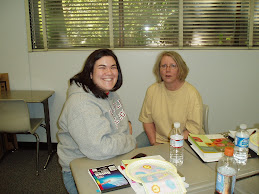What is Assistive Technology?
"Any item, piece of equipment, or product system, whether acquired commercially off the shelf, modified, or customized, that is used to increase, maintain, or improve functional capabilities of individuals with disabilities. AT service is directly assisting an individual with a disability in the selection, acquisition, or use of an assistive technology device."
Source: The US technology-related assistance for individuals with disabilities act of 1988, Section 3.1. Public Law 100-407, August 9, 1988 (renewed in 1998 in the Clinton Assistive Technology Act) - http://section508.gov/docs/AT1998.html#3
Friday, April 10, 2009
Subscribe to:
Post Comments (Atom)

What is Adaptive or Assistive Technology and What Does it Mean to Me?
Assistive or Adaptive Technology commonly refers to "...products, devices or equipment, whether acquired commercially, modified or customized, that are used to maintain, increase or improve the functional capabilities of individuals with disabilities..."
Assistive Technology Act of 1998
Assistive Technology Products can enable people with disabilities to accomplish daily living tasks, assist them in communication, education, work or recreation activities, in essence, help them achieve greater independence and enhance their quality of life.
Assistive Technology devices can help improve physical or mental functioning, overcome a disorder or impairment, help prevent the worsening of a condition, strengthen a physical or mental weakness, help improve a person's capacity to learn, or even replace a missing limb.
Assistive Technology Services support people with disabilities or their caregivers to help them select, acquire, or use adaptive devices. Such services include functional evaluations, training on devices, product demonstration, and equipment purchasing or leasing.
Assistive Technology Act of 1998
Assistive Technology Products can enable people with disabilities to accomplish daily living tasks, assist them in communication, education, work or recreation activities, in essence, help them achieve greater independence and enhance their quality of life.
Assistive Technology devices can help improve physical or mental functioning, overcome a disorder or impairment, help prevent the worsening of a condition, strengthen a physical or mental weakness, help improve a person's capacity to learn, or even replace a missing limb.
Assistive Technology Services support people with disabilities or their caregivers to help them select, acquire, or use adaptive devices. Such services include functional evaluations, training on devices, product demonstration, and equipment purchasing or leasing.
Assistive Technology is For Everyone
Assistive Technology (AT) is defined in the Individuals with Disabilities Education Act (IDEA) as, "...any item, piece of equipment, or product system... that is used to increase, maintain, or improve functional capabilities of individuals with disabilities." In other words, AT can be anything - from a pencil grip to a computer, a magnifying glass to a wheelchair - that helps a person perform a daily task that might otherwise be very difficult or impossible. AT accomodations can be written in to a child's Individualized Education Plan (IEP); for example, if a child has a difficult time typing on a regular keyboard, ergonomic or large-key keyboards may benefit the child and this could be written in to an IEP. AT should not be confused with Universal Design for Learning (UDL). UDL is when an entire curriculum is created and designed to differentiate instruction for every student, including students with disabilities, English Language Learners, and gifted and talented students.
Sites I Like
Welcome to my Blog
This is my blog... I am new to this world of blogology but am willing to give it a shot.






No comments:
Post a Comment